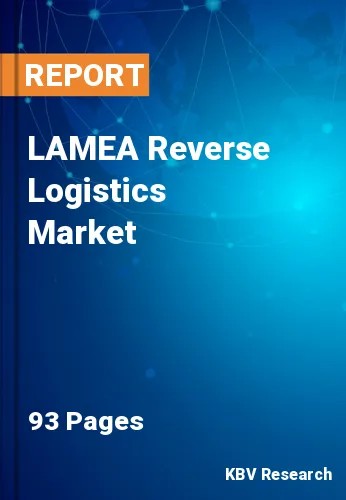The Latin America, Middle East and Africa Reverse Logistics Market would witness market growth of 15.0% CAGR during the forecast period (2022-2028).
A well-functioning reverse logistics department and its operations comes to significance when the objective is to deliver a higher level of service. Reverse logistics is necessary in competitive markets, and it is much more essential nowadays, especially at a pivotal moment in the brand/customer relationship such like return processing. Online customer influence and social media posting can have a significant impact on a business brand and market position.
This type of logistics allows any company or vendor to efficiently handle higher-level activities such as controlling and implementing storage and flow of these goods, the planning process, and the processing of any data related to it, which is increasing its use among them and thus benefiting market expansion. Furthermore, various governments' legislative and regulatory measures to implement reverse logistics techniques in order to ensure the effective disposal of product waste and environmentally friendly operations are likely to lead to the market's overall growth.
As an outcome of increased innovation and the development of automation technologies, the reverse logistics business is witnessing a surge in its demand. Such automation of technologies through reverse logistics is needed in various essential purposes like distributing medical facilities and food crop facilities, etc. The region is aided by increased government financing for transportation infrastructure development. In May 2021, for example, the Brazilian government announced plans to invest multiple billion dollars in airports, ports, highways, and trains. Reverse logistics companies will find it easier to function in the region as transportation infrastructure improves.
The Brazil market dominated the LAMEA Reverse Logistics Market by Country in 2021, and would continue to be a dominant market till 2028; thereby, achieving a market value of $32.8 Billion by 2028. The Argentina market is estimated to grow at a CAGR of 15.6% during (2022 - 2028). Additionally, The UAE market would witness a CAGR of 14.7% during (2022 - 2028).
Based on End User, the market is segmented into E-commerce, Retail, Pharmaceutical, Automotive, Consumer Electronics, and Others. Based on Return Type, the market is segmented into Commercial & B2B Type, Repairable, Recalls, End-of-use Returns, and End of life returns. Based on Service, the market is segmented into Transportation, Refund Management Authorization, Replacement Management, Reselling, and Warehousing. Based on countries, the market is segmented into Brazil, Argentina, UAE, Saudi Arabia, South Africa, Nigeria, and Rest of LAMEA.
Free Valuable Insights: The Global Reverse Logistics Market is Predict to reach $1796.9 Billion by 2028, at a CAGR of 11.9%
The market research report covers the analysis of key stake holders of the market. Key companies profiled in the report include Deutsche Bahn AG, United Parcel Service, Inc., Core Logistic Private Limited, Kintetsu World Express, Inc., FedEx Corporation, Deutsche Post DHL Group, C.H. Robinson Worldwide, Inc., Yusen Logistics Co., Ltd., Safexpress Pvt. Ltd., and Reverse Logistics GmbH
By End User
By Return Type
By Service
By Country
Our team of dedicated experts can provide you with attractive expansion opportunities for your business.

